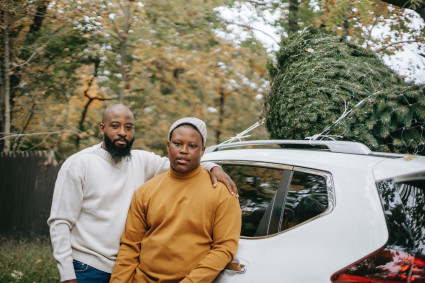The Fear of Being Seen Too Closely
Some teens avoid speaking not because they have nothing to say, but because they are afraid of how it will be received. Every word feels risky. Every pause feels exposed. For them, social interaction is not casual. It is loaded with expectation, uncertainty, and fear.
This fear grows in school settings, crowded places, and group conversations. It is not just about talking. It is about being watched, misread, or misunderstood. Over time, these teens begin to step back from connection. They protect themselves by staying quiet.
But something different happens when the connection begins through a screen.
A Camera Can Feel Less Intense Than a Room
When a teen opens a video chat from their bedroom, the setting is familiar. Their space, their timing, their rules. The other person is there, but not physically present. This creates just enough distance to make the moment feel safe.
In platforms like ChatMatch, where one-on-one video calls happen without crowds or comments, the interaction is direct but not overwhelming. You see one face. You hear one voice. There is no group watching. There is no pressure to entertain.
This is what makes video chat powerful for socially anxious teens. It keeps things personal but not invasive. Real but not intimidating. Controlled but still spontaneous.
It lets them speak before they are fully ready. And often, that is what helps them become ready at all.
Feeling In Control Builds Confidence
Teens with social anxiety often feel out of control in public situations. They cannot predict how others will react or when attention will turn to them. But in a video chat, they control when to start, when to pause, and when to end the interaction.
That sense of choice lowers the emotional cost of trying. The teen knows they can leave the chat if they feel overwhelmed. That freedom reduces fear. It invites curiosity. It makes space for trial and error.
And when they do speak, and nothing bad happens, something important begins to shift. They realize that they are capable of conversation. That they can be heard without harm.
That realization opens the door to new experiences.
When Small Moments Lead to Lasting Change
It might start with a simple greeting. Then a short conversation. Then a moment of laughter that doesn’t feel forced. Each of these moments builds something that teens with social anxiety often struggle to find. A sense of belonging without tension.
These are not dramatic changes. But they are meaningful. A few seconds of ease during a chat can change how someone views themselves. They begin to expect that not every interaction will end in discomfort. They start to see connection as a possibility rather than a threat.
Over time, these short conversations become part of a routine. The fear of social judgment loses strength. And in its place, a new pattern forms. One based on choice, curiosity, and self-trust.
Platforms Like ChatMatch Give Room to Practice
Growth in communication depends on repetition. But socially anxious teens rarely get that chance in real life. Most offline interactions are unpredictable, high-stakes, or overwhelming. Video chat offers a different model. It gives space for trial. It gives permission to start again.
Services like ChatMatch are designed for quiet connections. There are no ratings or rankings. No filters to manage. Just two people having a conversation.
That simplicity helps anxious teens focus on the moment. They can take a breath before answering. They can observe without pressure. And if the conversation doesn’t go well, it ends without consequence.
That sense of freedom builds confidence. Not because the chats are perfect, but because they are manageable.
From Avoidance to Engagement
Many teens with anxiety avoid interaction because they expect failure. They believe they will say the wrong thing, or be ignored, or misunderstood. Video chat softens that belief. It shows them that interaction can be short, imperfect, and still worth it.
As they speak more, they begin to listen better. As they feel safe, they begin to relax. They discover what connection feels like without fear driving every second.
And once that happens, their idea of what they are capable of begins to change.
What Begins Online Can Lead to Real-World Growth
As confidence builds in video chat settings, it begins to influence how teens behave elsewhere. A teen who used to avoid group work might speak up once. A teen who kept their head down in the hallway might look someone in the eye.
These changes are not always visible. But they matter. They mean that the teen has begun to carry a sense of possibility into places that once felt impossible.
It does not mean the anxiety is gone. But now it is balanced by evidence that they can speak, connect, and be accepted.
Video Chat Is Not the Answer to Everything, But It Can Be a Starting Point
No single tool solves social anxiety. But some tools open the way for change. One-on-one video chat, when used with care, gives teens a low-pressure space to try. To test who they are around others. To build comfort in being seen and heard.
Platforms like ChatMatch support this by creating space without noise. They allow connection to happen on the user’s terms. That structure makes it easier to return again and again, until the fear begins to shift.
It is not about becoming social overnight. It is about slowly removing the barriers that keep teens isolated.
Quiet Practice Can Lead to Real Confidence
What looks like a simple chat on a screen might be the most relaxed a teen has felt while talking to someone in a long time. That ease is not artificial. It is earned. It is the result of design, timing, and the right amount of safety.
Video chat will not fix everything. But it can make the first steps toward connection less frightening.
And when those steps begin, so does the path forward.














